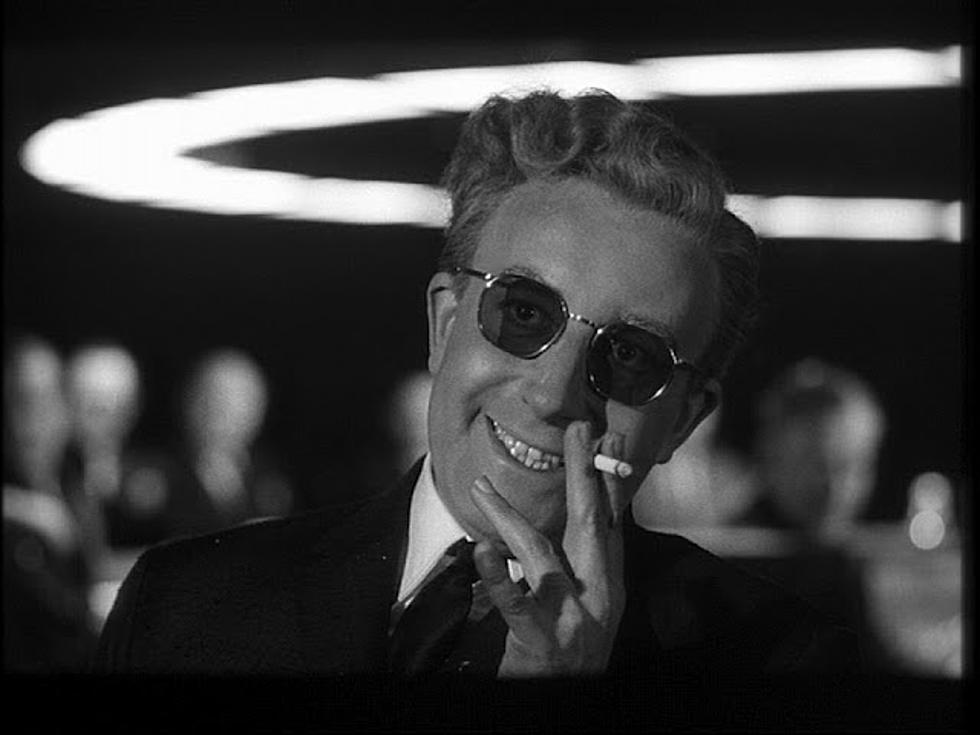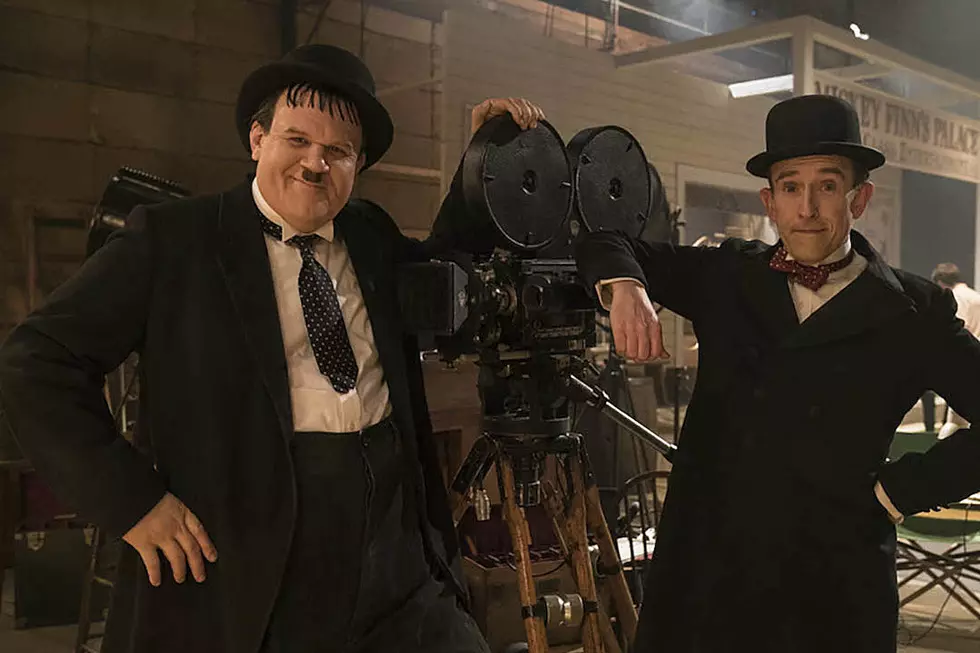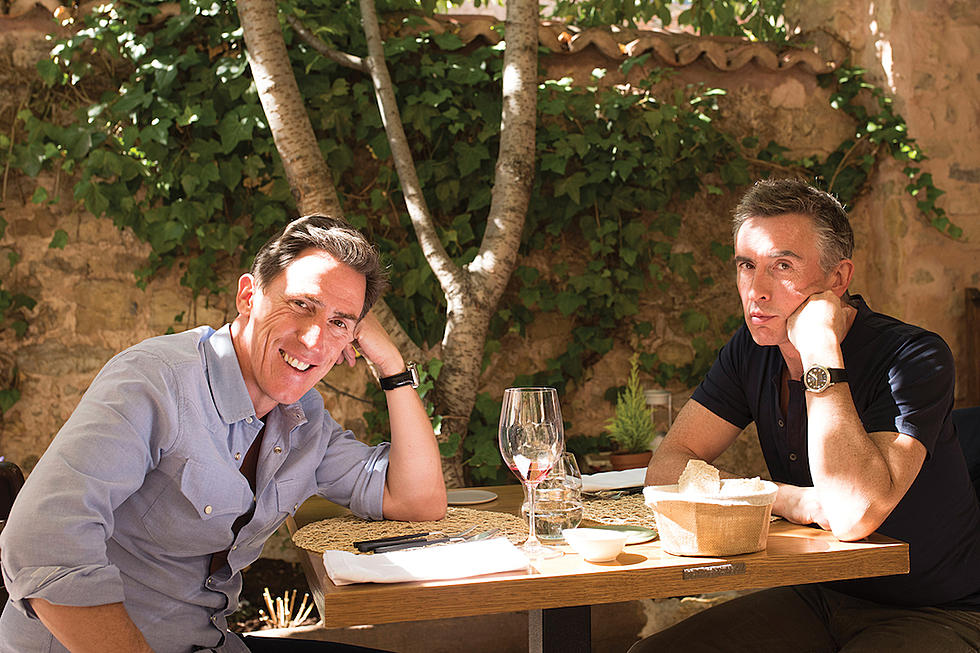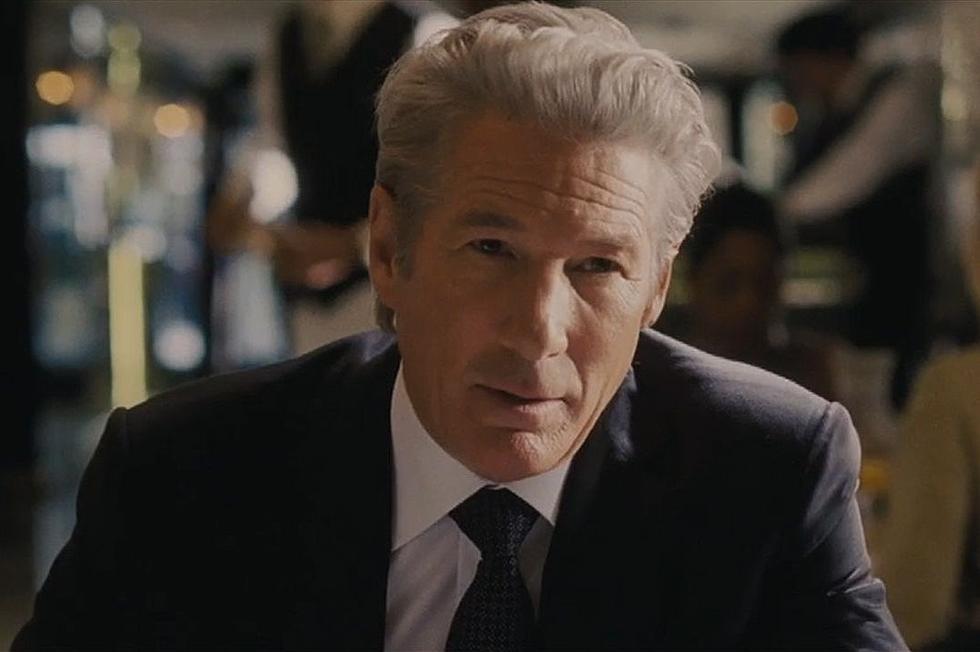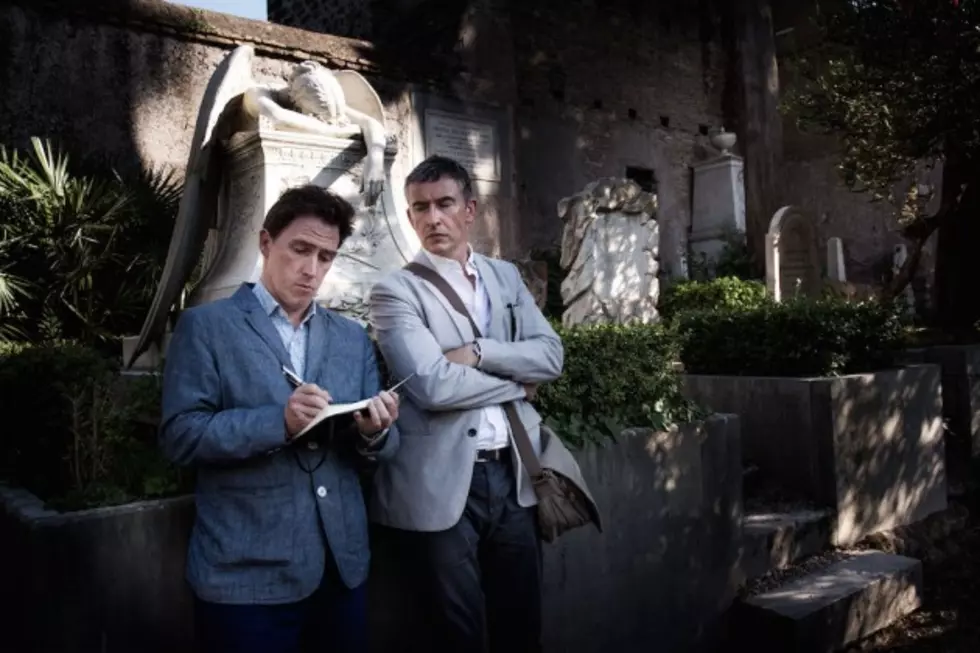
In Praise of ‘The Trip,’ the Best Current Movie Franchise on the Planet
I loved ‘The Avengers’ and I’m looking forward to the ‘Age of Ultron.’ I grew up on ‘Star Wars’ and I’m embarrassed to admit how many times I’ve watched ‘The Force Awakens’ trailer. But I would trade both those upcoming movies right now for a third installment of ‘The Trip,’ which is, hands down, the best current movie franchise on the planet.
You’re laughing at me, I can feel it. But you’re not laughing half as hard as I did last night when I watched ‘The Trip to Italy,’ the brilliant second installment in this series. Its premise is simple but ideal: British actors and comedians Steve Coogan and Rob Brydon star as loosely fictionalized versions of themselves, who are hired by The Observer to take foodie road trips and report back on their findings. (By their own admission, neither knows much of anything about haute cuisine.) In 2010’s ‘The Trip,’ Coogan and Brydon tour the fine dining establishments of northern England; in ‘The Trip to Italy’ they journey to Rome, Pompeii, and other picturesque Italian locales.
Both films originated as mini-series on the BBC; each six-episode season was cut down to about 110 minutes for US release. The entirety of each series was directed by Michael Winterbottom, who also directed Coogan and Brydon in the film that should probably be grandfathered into ‘The Trip’ franchise as a sort of unofficial prequel: 2005’s ‘Tristram Shandy: A Cock and Bull Story,’ which alternated between scenes adapting the famous Laurence Sterne novel (starring Steve Coogan and Tristram Shandy and Rob Brydon as Uncle Toby) with behind-the-scenes scenes of the making of that film, with “Steve Coogan” and “Rob Brydon” bickering over their parts and fretting over relationships with various women and the direction of their careers. ‘The Trip’ ditches the film-within-a-film conceit and focuses on the core dynamic of friendly competition between the two stars, and on their respective ambitions, neuroses, and impressions of Michael Caine.
Coogan and Brydon’s dueling Caines have received a fair amount of attention on the Internet; clips from each ‘Trip’ of their battling Alfie and Alfreds have gone viral on YouTube. If ‘The Trip’ has a wider reputation at all, this is it, as “The movie where Steve Coogan and Rob Brydon do impressions.” And to be sure, the stars do spend a good portion of each film trying to outdo one another with their respective renditions of Al Pacino, Robert De Niro, Woody Allen, and Roger Moore. But there’s a lot more to the series than bad imitations, which actually get to the root of what ‘The Trip’ is about.
Critics that dismissed ‘The Trip to Italy’ mostly called it a rehash; Coogan and Brydon visiting more restaurants, enjoying more conversations over food, one-upping one another with more funny voices. But those who dwelled over ‘The Trip to Italy’’s superficial rehashes ignored how much darker and more autobiographical Winterbottom, Coogan, and Brydon got with this sequel, which is one of the saddest comedies I’ve ever seen—one that’s as much about the inevitability of disappointment and death as it is who can do a better Michael Caine.
Smart, funny, and deeply personal. They barely make movies like this anymore; they almost never make franchises like this.
The film’s philosophy and structure is underscored by a key conversation between Coogan and Brydon, as they sip wine overlooking a particularly gorgeous Italian beach. “Do you think everything is melancholy once you get to a certain age?” Brydon asks. Then he quotes Garrison Keeler, who once said “When you’re under 40, seeming unhappy makes you look interesting. Once you’re 40, and beyond, you’ve got to do everything you can to smile. Otherwise you’re just a grumpy old man.”
‘The Trip to Italy’ is two grumpy old men doing everything they can to smile. Consider this scene, with Coogan and Brydon trying and failing to draw the attention of some beautiful young women:
In the film, the scene actually continues for a few more lines, with Brydon replying to Coogan’s comment about how “nature never disappoints you,” with the quip “Quite rough, though” as he looks down at some ocean waves crashing on a rocky beach. Later in the film, the duo travels to Pompeii, where they examine the remains of people who were buried alive by the eruption of Mount Vesuvius. Nature doesn’t disappoint; it’s always quite rough.
Throughout the film, in between their jokes and put-downs, Coogan and Brydon visit many other graves, statues, and homes of dead authors like Shelley and Byron, whose works have reverberated through the centuries. Death is in the air. They read some of their work aloud, and ponder the wondrous natural beauty—and mostly respond to it all with dumb jokes. At times they even wonder how their own bodies of work will stand up against the test of time. 200 years from now, will anyone remember ‘The Trip to Italy’?
If you don’t like Coogan and Brydon’s comedy, you’d say no, these guys fall well short of their literary idols. But Coogan and Brydon are being nakedly honest about their fears and inadequacies in a way that few movie comedians ever even attempt, and with ‘The Trip’ we get to watch those fears and inadequacies evolve over their careers. In the first film, Coogan was suffering from a bit of a mid-life crisis and contemplating a big sellout job in America. Now Coogan seems more comfortable and content and it’s Brydon on the verge of a meltdown, weighing his own major career move and a possible affair with a woman he meets in Italy. (One of the brilliant ironies of ‘The Trip to Italy’ is the way it subtly makes Brydon the lead and Coogan the supporting character, essentially validating all of Coogan’s petty anxieties that Brydon is perpetually trying to upstage him).
If ‘The Trip’ continues to grow with its subjects, it could become a sort of showbiz ‘Before Sunset.’ And in fact the end of ‘The Trip to Italy’ takes place at sunset, one far more downbeat than its radiant Mediterranean magic-hour lighting initially suggests. The images are beautiful, but the sun going down also evokes the end of something glorious and hints at darkness on the horizon (it’s implied that when this trip ends, one of the characters may not have a home to return to). Meanwhile, two more characters debate the endings of 1953’s ‘Roman Holiday’ and 1999’s ‘Notting Hill’ which resolve nearly identical scenarios of impossible love in totally different ways. The older film was allowed to be sad and wistful; the newer one had no choice but to provide the now-requisite happy ending. So it’s possible to read that sunset and that darkness on the horizon as one that extends beyond these particular characters and encompasses all of mature, adult mainstream cinema.
That’s ultimately why ‘The Trip’ is such a great and valuable franchise, because it’s a lovely counter-example of what a film series can be: Smart, funny, and deeply personal. They barely make movies like this anymore; they almost never make franchises like this (and even this one originated on TV). And unlike so many blockbusters that are subdivided or strip-mined for any lost morsel of material than can be packaged and sold, ‘The Trip’ feels endlessly and naturally repeatable, as Coogan and Brydon continue to age and find new things to hate or obsess over. At the very least, ‘The Trip to America’ seems like an idea with endless possibilities.
‘The Trip’ is currently streaming on Netflix. ‘The Trip to Italy’ will be available on DVD and Blu-ray on December 23.
More From ScreenCrush
